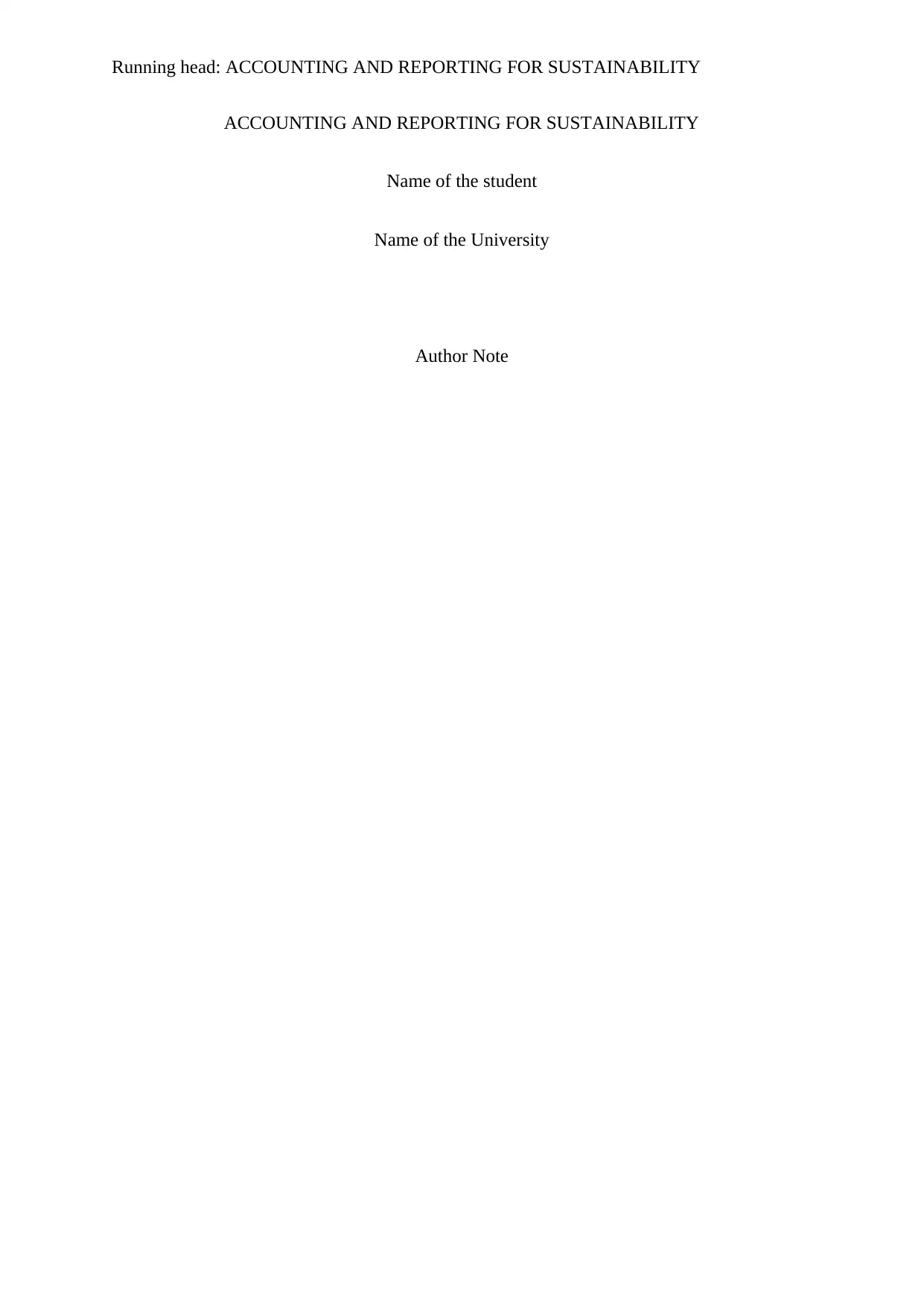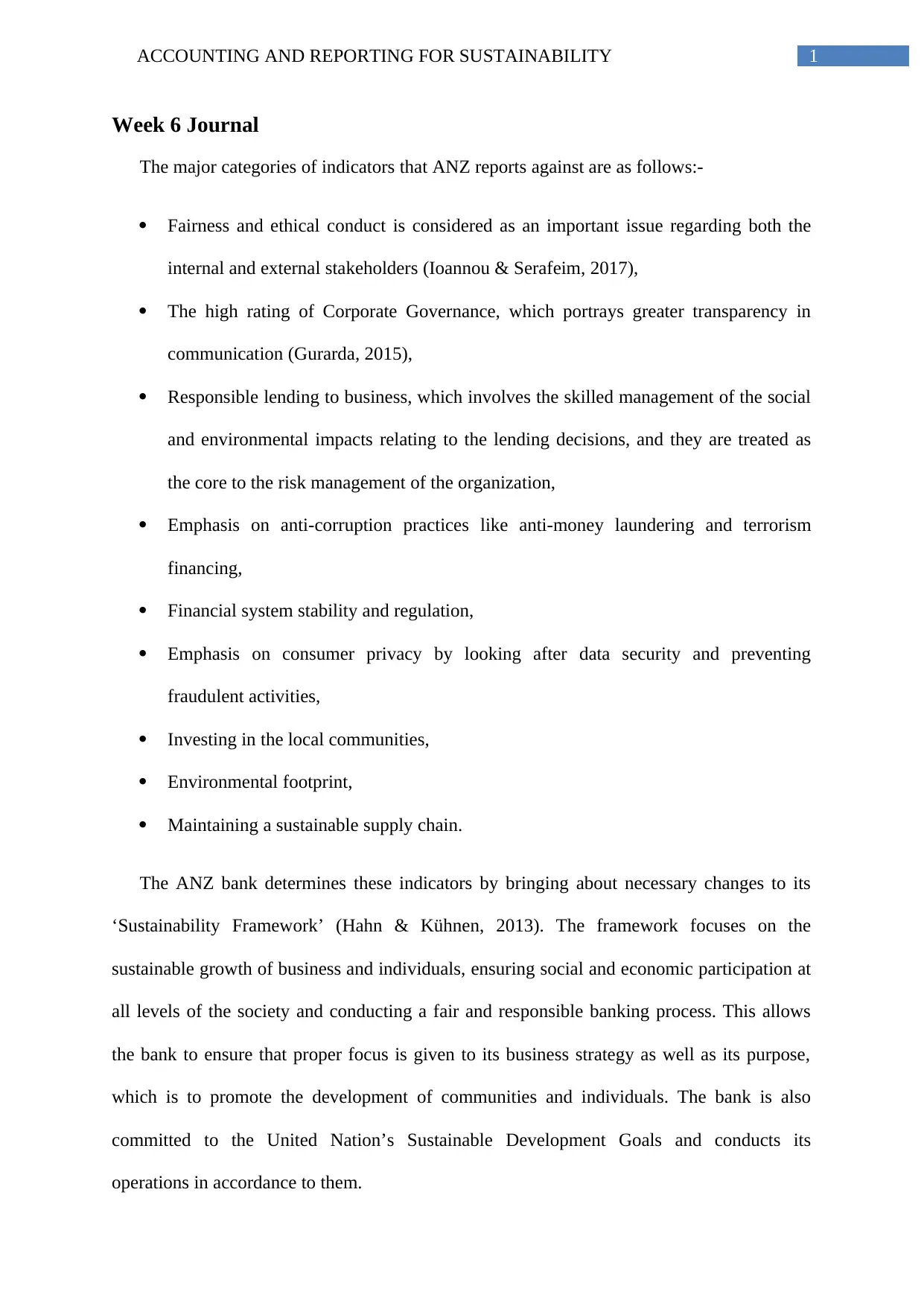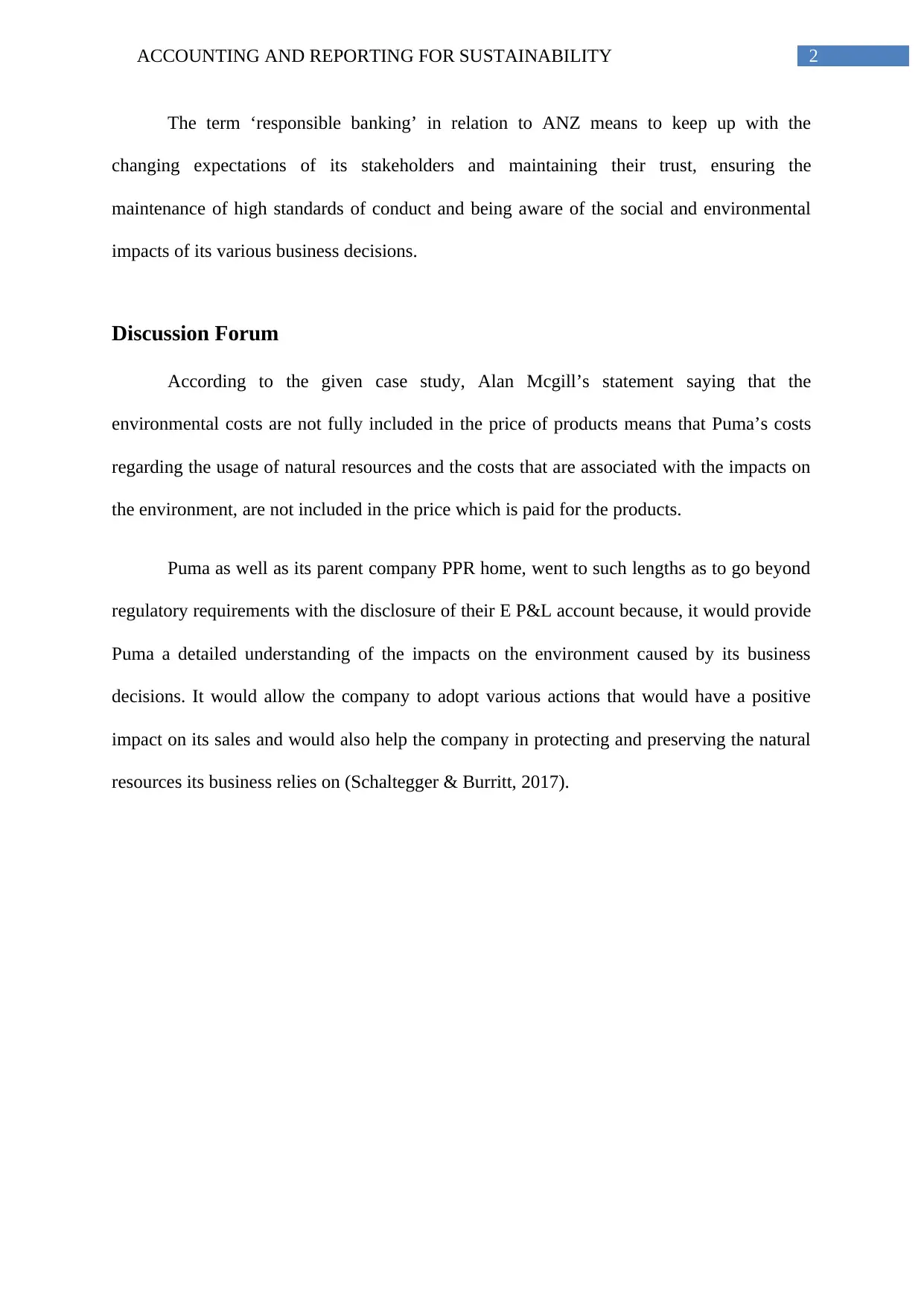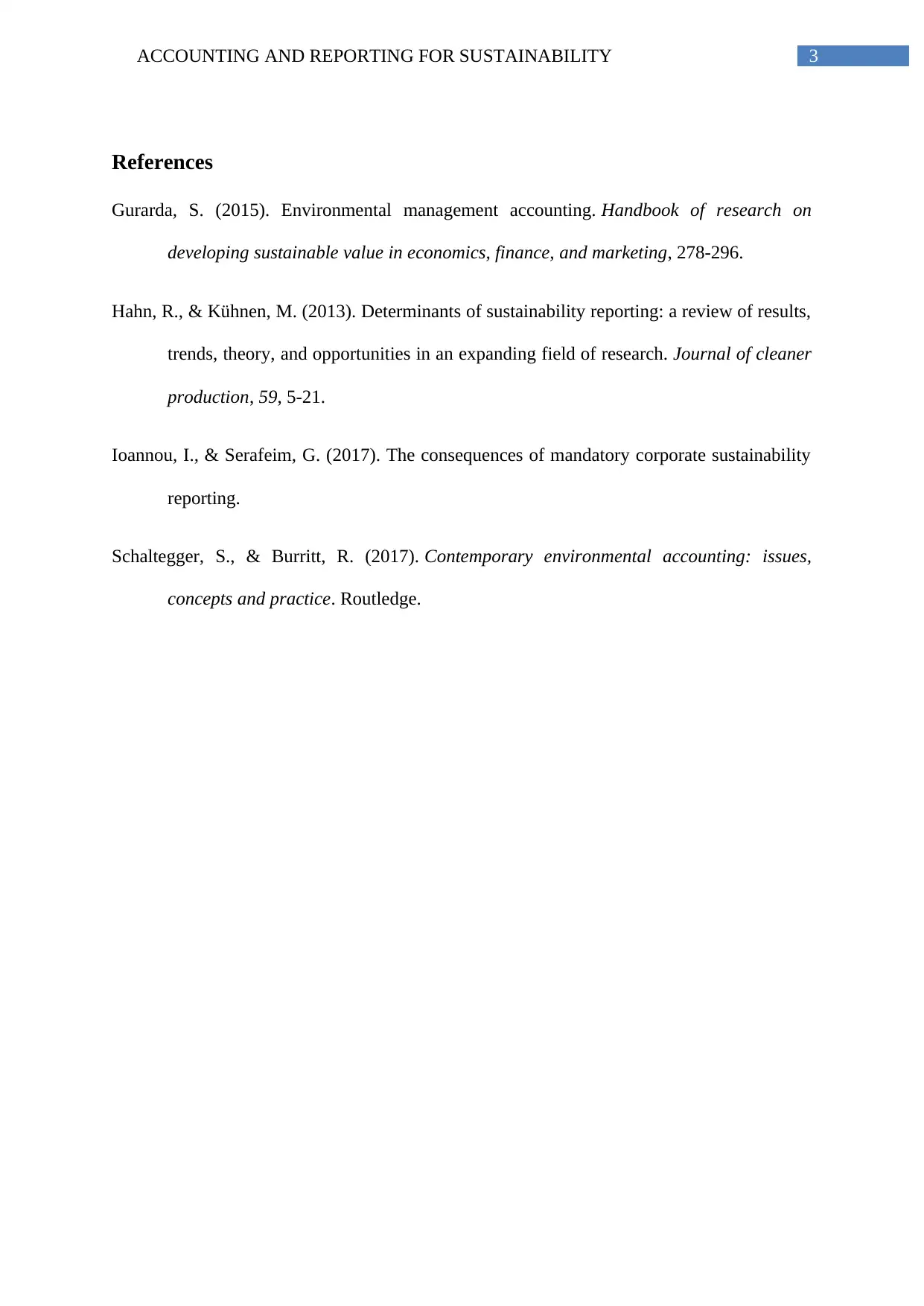Accounting and Reporting for Sustainability: University Report
VerifiedAdded on 2021/04/24
|4
|611
|76
Report
AI Summary
This report analyzes the accounting and reporting practices related to sustainability, focusing on the ANZ Bank's approach. It examines the bank's key indicators, such as fairness, corporate governance, responsible lending, and environmental footprint. The report highlights the bank's commitment to the United Nations' Sustainable Development Goals and its efforts to maintain high standards of conduct. Additionally, the report discusses the importance of including environmental costs in product pricing, as demonstrated by Puma's practices. The analysis emphasizes the benefits of detailed environmental impact assessments for business decision-making and the preservation of natural resources. The report references several academic sources to support its findings.
1 out of 4











![[object Object]](/_next/static/media/star-bottom.7253800d.svg)